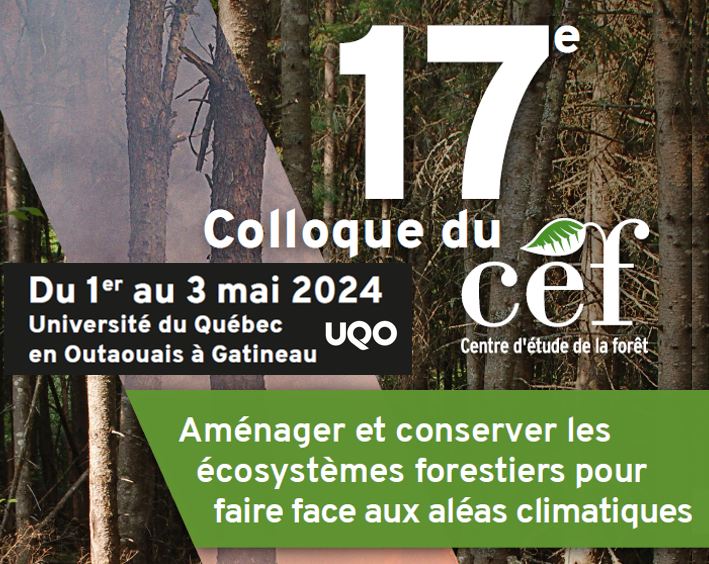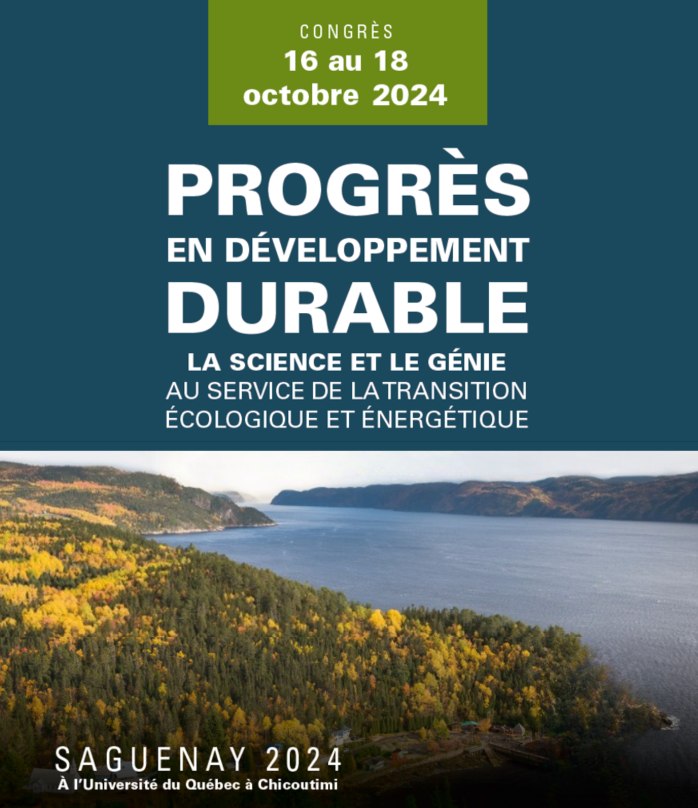
Maxence Martin
Membre associé
Écologie des forêts naturelles et aménagement forestier durable
Professeur en écologie forestière appliquée/Professor in applied forest ecology
Institut de recherche sur les forêts (IRF) | Forest Research Institute
Université du Québec en Abitibi-Témiscamingue
Bureau F-203
Tel. Office 819 762-0971 poste 2053
FORMATION
- 2019 : Doctorat en biologie à l’Université du Québec à Chicoutimi (Canada) sous la supervision de Hubert Morin et Nicole Fenton, avec pour sujet "Typologie, dynamique et valeur de conservation des vieilles forêts boréales dans les territoires aménagés de l'Est du Canada"
- 2014 : Master II « Forests and their environments » (FEN) à l’Université de Lorraine (France)
- 2013 : Mater I « Forêts, agriculture et gestion de l’environnement » (FAGE) à l’Université de Lorraine (France)
- 2012 : Licence professionnelle « Gestion durable des espaces forestiers et développement durabe » à l’Université de Lorraine (France)
- 2011 : Technique en gestion forestière à l’école forestière de Meymac (France)
- 2010 : Technique en gestion durable de l’environnement à l’école agricole de Briacé (France)
SUJETS DE RECHERCHE
Diversité et dynamique des vieilles forêts boréales
On appelle « vieilles forêts » les peuplements forestiers dynamisés par les perturbations secondaires. Ceux-ci se définissent le plus souvent par la présence de vieux arbres, une structure complexe et la présence de plusieurs cohortes composées majoritairement d’essences tolérantes à l’ombre. Les vieilles forêts étaient abondantes dans les paysages préindustriels boréaux de Québec mais sont désormais en déclin en raison de l’aménagement forestier. De plus, ces écosystèmes représentent en réalité une très forte diversité de structures, résultant de patrons de succession et de dynamique de perturbation très variables d’un peuplement à l’autre, et se définissant par des valeurs écologiques particulières. Dans ce contexte, mieux comprendre la diversité des vieilles forêts boréales est donc un enjeu de conservation important et une condition nécessaire à la mise en place de stratégies d’aménagement forestier durables.
Écart entre l’impact des perturbations naturelles et de l’aménagement forestier
Depuis 2013, le gouvernement du Québec à fait le choix d’une stratégie d’aménagement écosystémique de ses territoires forestiers, visant à réduire les écarts entre la forêt aménagée et la forêt naturelle. L’efficacité de ce type d’aménagement est dépendant d’une connaissance fine des dynamiques de perturbation naturelle, afin de proposer des solutions d’aménagement se rapprochant au mieux de l’effet des perturbations. De plus il est aussi important d’évaluer à quels points les impacts passés et actuels de l’aménagement forestier diffèrent de ce que l’on observait dans les territoires préindustriels. De cette manière, il deviendra plus aisé d’estimer à quel points les pratiques de gestions forestières doivent évoluer pour répondre aux exigences de l’aménagement écosystémique.
Étude des microhabitats arborescents en Amérique du Nord
On appelle « microhabitat arborescent » (ou souvent « microhabitats ») toute structure distincte et bien délimitée se trouvant sur des arbres vivants ou morts, constituant un substrat ou un site de vie particulier et essentiel pour certaines espèces ou communautés d'espèces pendant au moins une partie de leur cycle de vie (par ex. naissance, alimentation, abris, reproduction). Les cavités, les fentes dans le tronc, les morceaux d’écorce arrachés, les branches mortes ou les lianes sont ainsi des microhabitats. L’intérêt pour ces éléments s’est fortement développé en Europe durant la dernière décennie en raison de leur raréfaction dans les peuplements aménagés et des impacts observés sur la biodiversité. Cependant, les microhabitats sont encore peu étudiés en Amérique du Nord, à l’exception des cavités (naturelles ou creusées par les pics). Le but de ce projet vise donc à améliorer nos connaissances quand aux microhabitats (diversité, menaces, facteurs favorisant leur développement) dans les forêts tempérées et boréales du Québec.
Expliquer l’écologie des vieilles forêts boréales à l’aide de l’art : le projet Symphonies boréales
Symphonies Boréales est un projet artistique interdisciplinaire et pédagogique sur la vie, la dynamique et la diversité des vieilles forêts du Québec. Il se base sur la transposition en musique de la croissance annuel de plus de 755 arbres situés dans 21 vieilles forêts boréales du Québec. Grâce à ce procédé, l’histoire et les caractéristiques uniques de chacune des forêts analysées deviennent plus concrètes et permettent de sensibiliser le public aux conséquences de l’exploitation forestière à échelle industrielle. Une exposition itinérante a alors été réalisée autour de ces symphonies, combinant musique, peinture, installation immersive et projections au sein d’un itinéraire pédagogique afin de proposer une expérience complète et unique au spectateur.
Les Symphonies boréales peuvent s’écouter ici ![]() .
.
Vous pouvez télécharger toutes mes références bibliographiques en format BibTeX, BibTeX-CSV ou EndNote
PUBLICATIONS
Livres
- Molina, E., Valeria, O., Martin, M., Montoro Girona, M., Ramirez, J., Feldman, M., Grosbois, G., Pietrek, A. (2022) Natural Disturbances under Climate Change: Challenges, Trends, and Management Implications. (Montoro Girona, M., Campbell, E. and Bergeron, Y., Eds.) Forests
Chapitres de livre
- Montoro Girona, M., Aakala, T., Aquilue, N., Belisle, A.-C., Chaste, E., Danneyrolles, V., Diaz-Yanez, O., D'Orangeville, L., Grosbois, G., Hester, A. et al. (2023) Challenges for the Sustainable Management of the Boreal Forest Under Climate Change. In Boreal Forests in the Face of Climate Change: Sustainable Management. (Montoro Girona, M., Morin, H., Gauthier, S. and Bergeron, Y., Eds.) Cham, Springer International Publishing, pages 773-837
- Montoro Girona, M., Alcala Pajares, M., Martin, M. (2023) Ecological Silviculture of Black Spruce in Canadian Boreal Forests. In Ecological Silvicultural Systems: Exemplary Models for Sustainable Forest Management. (Palik, B.J. and D'Amato, A.W., Eds.) John Wiley & Sons Publishers, pages 128-140
- Martin, M., Shorohova, E., Fenton, N.J. (2023) Embracing the Complexity and the Richness of Boreal Old-Growth Forests: A Further Step Toward Their Ecosystem Management. In Boreal Forests in the Face of Climate Change: Sustainable Management. (Montoro Girona, M., Morin, H., Gauthier, S. and Bergeron, Y., Eds.) Cham, Springer International Publishing, pages 191-218
Livres, numéros spéciaux et actes de colloques publiés à titre d'éditeur
Aucun
Articles révisés par un comité de lecture
- Martin, M., Donoso, P., Arsenault, A., Bergeron, Y. (2023) Editorial: Vanishing old-growth forests: what are their roles and values for society under global change? Frontiers in Forests and Global Change, 6
- Zemlerova, V., Kozak, D., Mikolas, M., Svitok, M., Bače, R., Smyčkova, M., Buechling, A., Martin, M., Larrieu, L., Paillet, Y. et al. (2023) Natural Disturbances are Essential Determinants of Tree-Related Microhabitat Availability in Temperate Forests. Ecosystems
- Martin, M., Valeria, O. (2022) “Old” is not precise enough: Airborne laser scanning reveals age-related structural diversity within old-growth forests. Remote Sensing of Environment, 278:113098
- Molina, E., Valeria, O., Martin, M., Montoro Girona, M., Ramirez, J.A (2022) Long-Term Impacts of Forest Management Practices under Climate Change on Structure, Composition, and Fragmentation of the Canadian Boreal Landscape. Forests, 13(8)
- Martin, M., Valeria, O., Potapov, P., Paillet, Y. (2022) Editorial: Forests of high naturalness as references for management and conservation: Potential and pitfalls. Frontiers in Forests and Global Change, 5:1004087
- Martin, M., Fenton, N.J., Morin, H. (2021) Tree-related microhabitats and deadwood dynamics form a diverse and constantly changing mosaic of habitats in boreal old-growth forests. Ecological Indicators, 128:107813
- Martin, M., Grondin, P., Lambert, M.-C., Bergeron, Y., Morin, H. (2021) Compared to Wildfire, Management Practices Reduced Old-Growth Forest Diversity and Functionality in Primary Boreal Landscapes of Eastern Canada. Frontiers in Forests and Global Change, 4:15
- Martin, M., Cerrejon, C., Valeria, O. (2021) Complementary airborne LiDAR and satellite indices are reliable predictors of disturbance-induced structural diversity in mixed old-growth forest landscapes. Remote Sensing of Environment, 267:112746
- Martin, M., Boucher, Y., Fenton, N.J., Marchand, P., Morin, H. (2020) Forest management has reduced the structural diversity of residual boreal old-growth forest landscapes in Eastern Canada. Forest Ecology and Management, 458
- Martin, M., Fenton, N.J., Morin, H. (2020) Boreal old-growth forest structural diversity challenges aerial photographic survey accuracy. Canadian Journal of Forest Research, 50(2):155-169
- Martin, M., Montoro Girona, M., Morin, H. (2020) Driving factors of conifer regeneration dynamics in eastern Canadian boreal old-growth forests. PLOS ONE, 15(7):e0230221
- Martin, M., Morin, H., Fenton, N.J. (2019) Secondary disturbances of low and moderate severity drive the dynamics of eastern Canadian boreal old-growth forests. Annals of Forest Science, 76(4):108
- Martin, M., Fenton, N.J., Morin, H. (2018) Structural diversity and dynamics of boreal old-growth forests case study in Eastern Canada. Forest Ecology and Management, 422:125 - 136
Articles publiés dans des actes de colloque (proceedings)
Aucun
Rapports scientifiques, manuels et autres
Aucun
Thèses, mémoires et essais
- Martin, M. (2019) Typologie, dynamique et valeur de conservation des vieilles forêts boréales résineuses de l’Est du Canada en territoire aménagé. Thèse de doctorat, Université du Québec à Chicoutimi
Thèses, mémoires et essais supervisés
Aucun
Articles non révisés par un comité de lecture
Aucun
PUBLICATIONS
Chapitres de livres
Martin M., Shorohova K., Fenton N.J. Accepté. Embracing the complexity and the richness of boreal old-growth forests: a further step towards their ecosystem management. Dans: Montoro Girona M., Morin H., Gauthier S., Bergeron Y. Boreal Forests in the Face of Climate Change. Springer Nature Switzerland
Montoro Girona M, Aquilue N, Belisle AC, Chaste E, Danneyrolles V, Diaz O, D’Orangeville L, Grosbois G, Hester A, Kulha N, Martin M, Moussaoui L, Pappas C, Portier J, Tremblay JP, Svensson J, Versluijs M, Wallgren M, Wang J and Gauthier S. En presse. The Challenges of Sustainable management in the Boreal Forest in the Face of Climate Change. Dans: Montoro Girona M, Morin H, Gauthier S, Bergeron Y. Boreal Forests in the Face of Climate Change. Springer Nature Switzerland
Revues à comité de lecture
Martin M., Valeria O. (2022) “Old” Is Not Precise Enough: Airborne Laser Scanning Reveals Age-Related Structural Diversity within Old-Growth Forests. Remote Sensing of Environment 278, 113098. https://doi.org/10.1016/j.rse.2022.113098.
Martin M., Paillet Y., Larrieu L., Kern C.C., Raymond P., Drapeau P., Fenton N.J. (2022) Tree-Related Microhabitats Are Promising Yet Underused Tools for Biodiversity and Nature Conservation: A Systematic Review for International Perspectives. Frontiers in Forests and Global Change 5, 1‑18. https://doi.org/10.3389/ffgc.2022.818474.
Molina E., Valeria O., Martin M., Montoro Girona M., Ramirez J.A. (2022) Long-Term Impacts of Forest Management Practices under Climate Change on Structure, Composition, and Fragmentation of the Canadian Boreal Landscape. Forests 13:8 (15 août 2022), 1292. https://doi.org/10.3390/f13081292.
Martin M., Leduc A., Fenton N.J., Montoro Girona M., Bergeron Y., Valeria O. (2022) Irregular Forest Structures Originating after Fire: An Opportunity to Promote Alternatives to Even‐aged Management in Boreal Forests. Journal of Applied Ecology 59:7, 1792‑1803. https://doi.org/10.1111/1365-2664.14186.
Martin M., Cerrejón C., Valeria, O. (2021). Complementary airborne LiDAR and satellite indices are reliable predictors of disturbance-induced structural diversity in mixed old-growth forest landscapes. Remote Sensing of Environment. 267: 112746. https://doi.org/10.1016/j.rse.2021.112746
Martin M., Fenton N., Morin H. (2021). Tree-related microhabitats and deadwood dynamics form a diverse and constantly changing mosaic of habitats in boreal old-growth forests. Ecological Indicators. 128: 107813. https://doi.org/10.1016/j.ecolind.2021.107813
Martin M., Boucher Y., Raymond P. (2021). Influence of individual tree characteristics and spatial structure on tree-related microhabitat occurrence in North American hardwood forests. Forest Ecosystems. 8:27, 1-16. https://doi.org/10.1186/s40663-021-00305-z
Martin M., Grondin P., Lambert M.C., Bergeron Y., Morin H. (2021). Compared to wildfire, management practices reduced old-growth forest diversity and functionality in primary boreal landscapes of eastern Canada. Frontiers in Forests and Global Change. 4:639397. https://doi.org/10.3389/ffgc.2021.639397
Martin M., Tremblay J., Ibarzabal J., Morin H. (2021). Indicator species highlights temporal continuity of deadwood supply is a key ecological attribute of boreal old-growth forests. Ecosphere. 12-5, 1-19. https://doi.org/10.1002/ecs2.3507
Berguet C., Martin M., Arsenault D., Morin H. (2021). Spatiotemporal dynamics of 20th century spruce budworm outbreaks in Eastern Canada: three distinct patterns of severity. Frontiers in Ecology and Evolution. 8(Janvier) :1-12. https://doi.org/10.3389/fevo.2020.544088
Martin M., Krause C., Morin H. (2020). Linking radial growth patterns and moderate-severity disturbance dynamics in boreal old-growth forests driven by recurrent insect outbreaks: a tale of opportunities, successes, and failures. Ecology and Evolution (November):1–21. https://doi:10.1002/ece3.7080
Martin, M., Montoro Girona, M. & Morin, H. (2020).Driving factors of conifer regeneration dynamics in eastern Canadian boreal old-growth forests. PLoS ONE, 1-27. http://dx.doi.org/10.1371/journal.pone.0230221
Martin, M., Krause, C., Fenton, N. J., & Morin, H. (2020). Unveiling the diversity of tree growth patterns in boreal old-growth forests reveals the richness of their dynamics. Forests, 11, 1-18. https://doi.org/10.3390/f11030252
Martin, M., Boucher, Y., Fenton, N., Marchand, P., & Morin, H. (2020). Forest management has reduced the structural diversity of residual boreal old-growth forest landscapes in Eastern Canada. Forest Ecology and Management. https://doi.org/10.1016/j.foreco.2019.117765
Martin, M., Fenton, N. J., & Morin, H. (2020).Boreal old-growth forest structural diversity challenges aerial photographic survey accuracy. Canadian Journal of Forest Research, 50, 155–169. https://doi.org/dx.doi.org/10.1139/cjfr-2019-0177
Martin, M., & Raymond, P. (2019). Assessing tree-related microhabitat retention according to a harvest gradient using tree-defect surveys as proxies in Eastern Canadian mixedwood forests. The Forestry Chronicle, 95(03): 157-170, https://doi.org/10.5558/tfc2019-025.
Martin, M., Morin, H., & Fenton, N. J. (2019). Secondary disturbances of low and moderate severity drive the dynamics of eastern Canadian boreal old-growth forests. Annals of Forest Science, 76(108), 1–16. https://doi.org/10.1007/s13595-019-0891-2
Martin, M., Fenton, N., & Morin, H. (2018). Structural diversity and dynamics of boreal old-growth forests case study in Eastern Canada. Forest Ecology and Management, 422(April), 125–136. Lien vers l'article ![]()
Mémoires et thèses
Martin, M. (2019). Typologie, dynamique et valeur de conservation des vieilles forêts boréales résineuses de l'Est du Canada en territoire aménagé. Université du Québec à Montréal. 203 p.
Martin, M. (2014). Identifying and preserving old-growth attributes in mixed forest stands dominated by yellow birch (Betula alleghaniensis) and balsam fir (Abies balsamea) in the context of ecosystem management in Québec. Université de Lorraine. 25 p.
Martin, M. (2014). Identifier et préserver les attributs de vieilles forêts dans les forêts mixtes de bouleau jaune (Betula alleghaniensis)et sapin baumier (Abies balsamea) dans le contexte de l'aménagement systémique au Québec. Université de Lorraine. 25 p.
Autres publications
Martin, M., & Raymond, P. (2020). Identifier les traitements sylvicoles préservant les microhabitats arborescents à l’aide des inventaires de défauts des arbres. Avis de recherche forestière, n°141.











